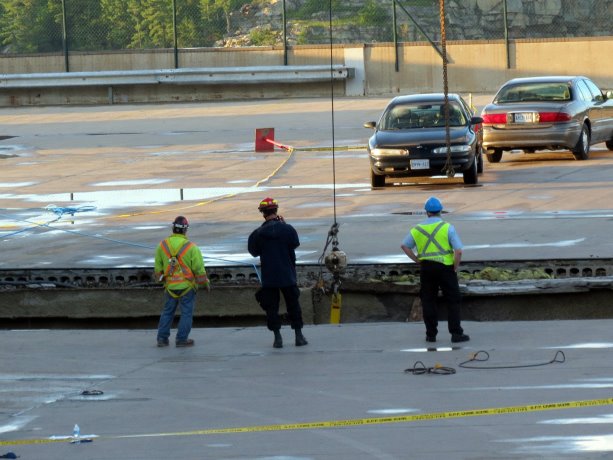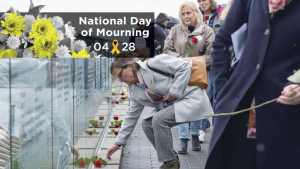In the wake of the tragic roof collapse at the Elliot Lake shopping mall, more care, diligence and planning needs to be taken in the installation and construction of additions to existing buildings.
The structural design of the original building may not be enough to support the extra load where weight hasn’t been factored in, cautions Maged Mikhail, a building engineer with the Town of Halton Hills.
"We are seeing more of this (instances of additional loading) and it is of concern to building officials," says Mikhail, who conducted a seminar during the recent Construct Canada conference titled, Structural Safety: Lessons Learned from Elliot Lake and Beyond.
Doloris Perizzolo and Lucie Aylwin were killed after a portion of the rooftop parking deck at the Algo Mall crashed onto the two floors below in June 2012.
Mikhail’s seminar provided a broad-based overview of numerous recommendations contained in a 2014 report of the Elliot Lake Commission of Inquiry, which carefully examined the events surrounding the collapse. The roof collapse that killed two and injured 19 was the result of a sudden failure of a connection between one beam and one column of the steel substructure below the parking deck of the mall.
In all, more than 70 recommendations were made in the report, which was directed in part to the Ministry of Municipal Affairs of Housing, Professional Engineers Ontario (PEO) and municipalities.
Not all of the recommendations have been implemented or even considered, Mikhail stated, including one where municipalities should create and maintain a public electronic system to record orders of repairs, complaints and breaches of property standards with an update of the action taken.
Reminding the seminar participants the inquiry panel was particularly hard on the role of the engineering profession in the events leading to the disaster, Mikhail emphasized PEO has "been very good at following through."
Some of the recommendations, which the PEO is working hard to implement, include a designation for structural engineering specialists who would inspect and document changes to existing buildings.
In an interview following the seminar, Mikhail pointed out that, following the Kansas City Hyatt-Regency walkway collapse in 1981 that killed 114 people and injured more than 200, a structural engineering specialist designation was implemented in the United States. A similar one was introduced in British Columbia after the Save-On-Foods supermarket roof collapse in 1988. No one was killed, but 21 people were injured, he pointed out.
As well, PEO is defining the role and responsibilities of the prime consultant in collaboration with the Ontario Association of Architects. Citing the findings of the inquiry, Mikhail said there seems to have been no prime consultant in the design of the Algo Mall.
While a portion of the seminar was devoted to a review of the issues leading up to roof collapse and the subsequent inquiry, the second half focused on the some key structural issues building officials are grappling with, which are a major topic at municipal engineering meetings.
Those issues are the potential problems that can arise when owners or contractors proceed with the construction or erection of additions without a structural design update and simply depend on the existing building to support the extra weight.
Examples include mezzanines, the use of adjustable steel columns, the addition of overhead cranes, alterations to pre-engineered buildings that can compromise the structural design of the slab-on-grade, or additions which are higher than the existing building (which could then be vulnerable to sliding snow conditions).
"Before you start on structural design you need to consult with the (local) municipality," said Mikhail, emphasizing that snow load conditions can vary greatly from municipality to municipality and even within the same municipality.
As a closing piece of advice, he urged the audience not to put blind trust in software design systems and to always verify the calculations such systems produce.
"Software are not divine made, they’re manmade."





Recent Comments
comments for this post are closed